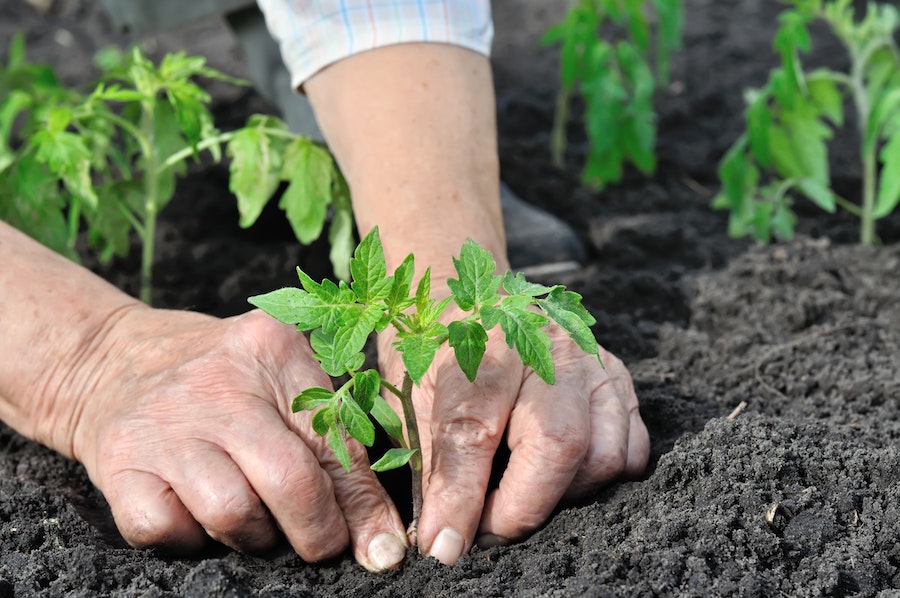This is how to grow the tastiest tomatoes for summer
Hannah Stephenson discovers the five most delicious varieties and learns how to improve their flavour.
Last year, I had the best crop of outdoor tomatoes I had ever grown – kilos and kilos of Tumbling Tom cherry tomatoes cascaded over the trough from just two plants.
The problem was, they were pretty tasteless. I ended up making them into passata, which I’m ashamed to say I added a teaspoon of sugar to, during cooking, to sweeten the sauce up.
Anyway, roll on another year and another tomato. These are the five I have on my list to grow – as recommended by horticulturists, allotment holders and amateur gardener enthusiasts.
Of course, flavour will vary depending on temperature, sun, rain and soil type, but they should taste amazing given the right growing conditions.
1. Sweet Aperitif

Among the sweetest cherry tomatoes is ‘Sweet Aperitif’
This cordon tomato promises great trusses of the sweetest cherry tomatoes from July to September. Rather than confine their growth in a growbag, try growing them direct in fertile soil, or in a large pot in a sheltered, sunny spot (just one plant per pot). Feed them with high potash plant food to enrich the crop. As it’s a cordon variety, you’ll need to stake the main growing stem, which reaches two metres, and pinch out sideshoots as the plant grows.
2. Sungold

Sungold tomatoes are a favourite with children
Another cordon which, this time, produces delicious, golden yellow-orange tomatoes – and is a favourite with children, who pop them like they’re sweets.
If you are growing them outside, add plenty of compost to the ground before planting out in early summer, after all risk of frost has passed, and create a shallow reservoir around the plant to help retain water. Water the soil, not the plant, stake them, pinch out the sideshoots as they’re growing and pinch out the tops when they have set five to six trusses.
To distract pests, try companion planting basil underneath the plants, which will encourage whitefly to the herb, rather than the tomatoes.
3. Santonio

If you prefer plum tomatoes, go for Santonio
This mouth-watering plum tomato is a must for those who want the sweetest fruits. For the best results, grow this cordon type in a greenhouse, but it will also thrive in a sheltered, sunny spot outdoors. Expect a good acidic ‘bite’ with lingering sweetness from these glossy red fruits.
4. Gardener’s Delight
This is probably the most popular cherry tomato grown by amateur gardeners, and with good reason. Widely available, they produce huge trusses of sweet cherry tomatoes, that are among the first to start ripening.
These cordon types are ideal for growing outside in a sunny, sheltered spot. Greenhouse fruits should be ready from early July and outdoor plants from early August.
5. Black Russian

Black Russian is a striking colour
This heritage beefsteak variety is among the favourites of keen tomato grower Guy Barter, the RHS chief horticultural adviser, thanks to its succulent and slightly salty flavour, perfect sliced in salad with pepper and balsamic vinegar. The fruits of this cordon type have an interesting dark colour, almost aubergine, and a rich, complex flavour.
How do you get the best flavour out of your tomatoes?
“It’s about striking a balance,” says Barter. “If you put tomatoes under stress, they will taste better. The harder the life a tomato has, the stronger its skin and the better the flavour. Giving them too much water and nitrogen to make them big also tends to dilute the flavour.
“Give them as much sunlight and warmth as you can manage, and pick them at the very cusp of ripeness.”
What about feeding?
It does make a difference, but you don’t really want a lush tomato, says Barter.
“They have an enormous need for potassium and it’s important to give them a potassium-rich fertiliser (sold as tomato food) to get the best results.”
But he doesn’t plant his tomatoes on his vegetable patch in rich compost.
“I don’t give them lots of nitrogen fertiliser, just a general dressing of high potassium fertiliser. I water them to keep them alive and don’t give them feed until the first fruits begin to form.
“Obviously, if your ground is nasty and powdery or baked, it’s good practice to add some compost, but by and large, ordinary garden soil is good enough for tomatoes.”
The Press Association
Latest posts by The Press Association (see all)
- What you need to know about weight loss jabs and how to make them work effectively - April 25, 2025
- Is our skin more susceptible to sun damage as we age? - April 25, 2025
- Special stamps to mark 80th anniversary of VE Day - April 24, 2025
- Test your knowledge with our penguin-themed quiz - April 24, 2025
- Prince Louis shows off missing front teeth in new photo to mark seventh birthday - April 23, 2025



















